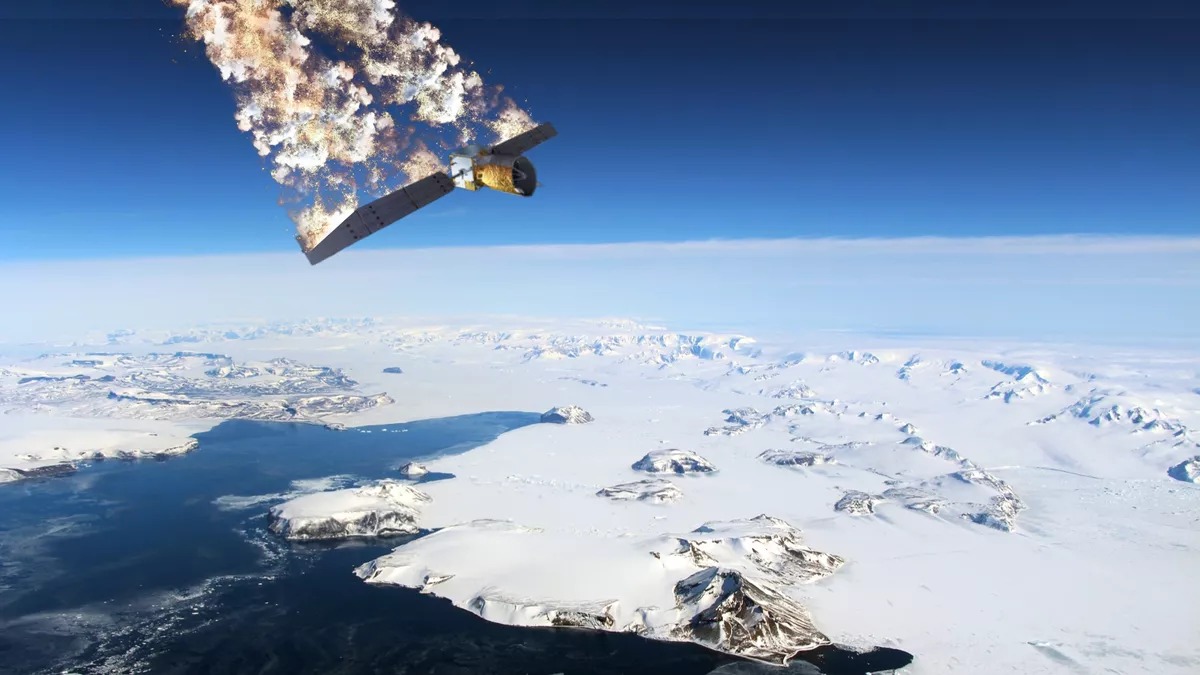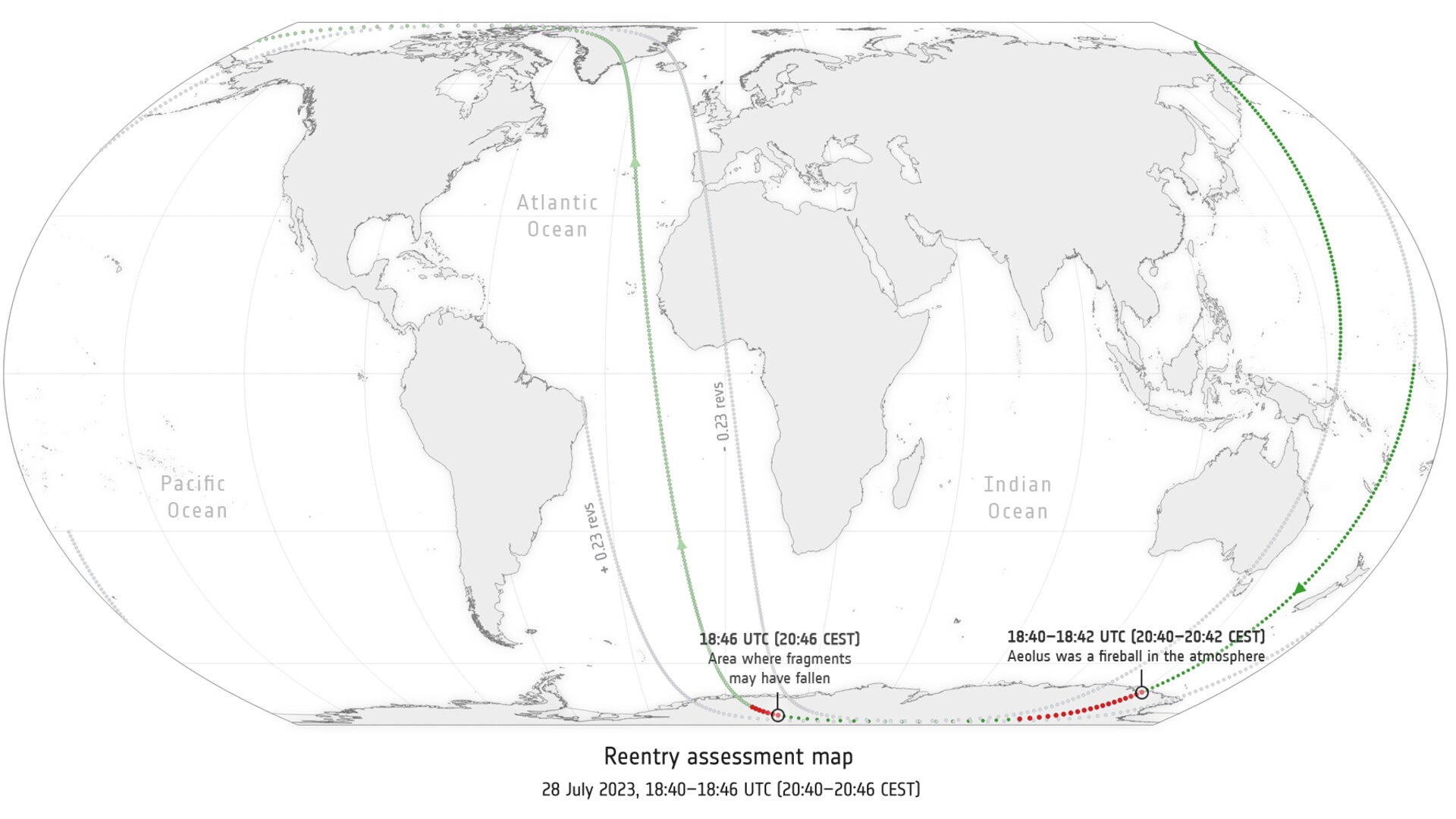On Friday, July 28, the Aeolus spacecraft made a planned and controlled fall to Earth. It was quite large, and therefore did not completely burn up in the atmosphere — part of it reached the surface. But where did the burnt remnants of the spacecraft fall? Engineers of the European Space Agency (ESA) managed to calculate the exact location of the satellite, which was distinguished by measuring the speed and strength of the cosmic wind for the first time, for which it was named after the god of winds in Greek mythology.

The operation of sending the satellite to Earth was difficult, since its goal was to ensure its fall as far as possible from populated areas. It was expected that only a quarter of the mass of the spacecraft could reach the Earth’s surface. This is a lot, because the remnants could cause harm. Through a series of maneuvers, the accompanying team managed to successfully steer the Aeolus using the residual fuel of the on-board engines. No one saw the fall, since it occurred over Antarctica at 09:40 p.m. GMT+3.
ESA used data on the satellite’s last orbital position, as well as information from the US Space Command, to create a map of the trajectory of the spacecraft’s fall in the Earth’s atmosphere. It turned out that about 80% of it burned during entry into dense atmospheric layers, and the remaining 20% fell into the Atlantic Ocean.

Entering the atmosphere, the satellite turned into a bright fireball over Antarctica, moving at a speed of about 27 thousand km/h. The ESA team carried out a successful controlled descent and identified the place where the wreckage of the spacecraft fell into the waters of the Atlantic Ocean.
The maneuver was planned in such a way as to minimize the risk of falling of the remaining fragments near populated areas, reducing it by 150 times. This is important because falling space debris can pose a threat to the public and property.
An example of a successful descent of Aeolus can be applied to other satellites in near-Earth orbits that are too large to completely burn up in the atmosphere. Such controlled descents can reduce the risk to our planet and increase the safety of space missions.
Earlier we reported on how Starlink satellites threatened the orbit with Kessler syndrome.
According to space.com
Follow us on Twitter to get the most interesting space news in time
https://twitter.com/ust_magazine
